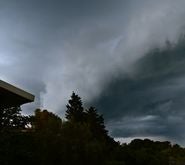In December I wrote about Lothar and Daria, a cluster of windstorms that emphasized the significance of ‘location’ when assessing windstorm risk. This month we have the 25th anniversary of the most damaging cluster of European windstorms on record—Daria, Herta, Wiebke, and Vivan.
This cluster of storms highlighted the need for better understanding the potential impact of clustering for insurance industry.
At the time of the events the industry was poorly prepared to deal with the cluster of four extreme windstorms that struck in rapid succession over a very short timeframe. However, since then we have not seen such a clustering again of such significance, so how important is this phenomena really over the long term?
There has been plenty of discourse over what makes a cluster of storms significant, the definition of clustering and how clustering should be modeled in recent years.
Today the industry accepts the need to consider the impact of clustering on the risk, and assess its importance when making decisions on underwriting and capital management. However, identifying and modeling a simple process to describe cyclone clustering is still proving to be a challenge for the modeling community due to the complexity and variety of mechanisms that govern fronts and cyclones.
What is a cluster of storms?
Broadly, a cluster can be defined as a group of cyclones that occur close in time.
But the insurance industry is mostly concerned with severity of the storms. Thus, how do we define a severe cluster? Are we talking about severe storms, such as those in 1990 and 1999, which had very extended and strong wind footprints. Or is it storms like those in the winter 2013/2014 season, that were not extremely windy but instead very wet and generated flooding in the U.K.? There are actually multiple descriptions of storm clustering, in terms of storm severity or spatial hazard variability.
Without a clearly identified precedence of these features, defining a unique modeled view for clustering has been complicated and brings uncertainty in the modelled results. This issue also exists in other aspects of wind catastrophe modeling, but in the case of clustering, the limited amount of calibration data available makes the problem particularly challenging.
Moreover, the frequency of storms is impacted by climate variability and as a result there are different valid assumptions that could be applied for modeling, depending on the activity time frame replicated in the model. For example, the 1980s and 1990s were more active than the most recent decade. A model that is calibrated against an active period will produce higher losses than one calibrated against a period of lower activity.
Due to the underlying uncertainty in the model impact, the industry should be cautious of only assessing either a clustered or non-clustered view of risk until future research has demonstrated that one view of clustering is superior to others.
How does RMS help?
RMS offers clustering as an optional view that reflects well-defined and transparent assumptions. By having different views of risk model available to them, users can better deepen their understanding of how clustering will impact a particular book of business, and explore the impact of the uncertainty around this topic, helping them make more informed decisions.
This transparent approach to modeling is very important in the context of Solvency II and helping (re)insurers better understand their tail risk.
Right now there are still many unknowns surrounding clustering but ongoing investigation, both in academia and industry, will help modelers to better understand the clustering mechanisms and dynamics, and the impacts on model components to further reduce the prevalent uncertainty that surrounds windstorm hazard in Europe.






